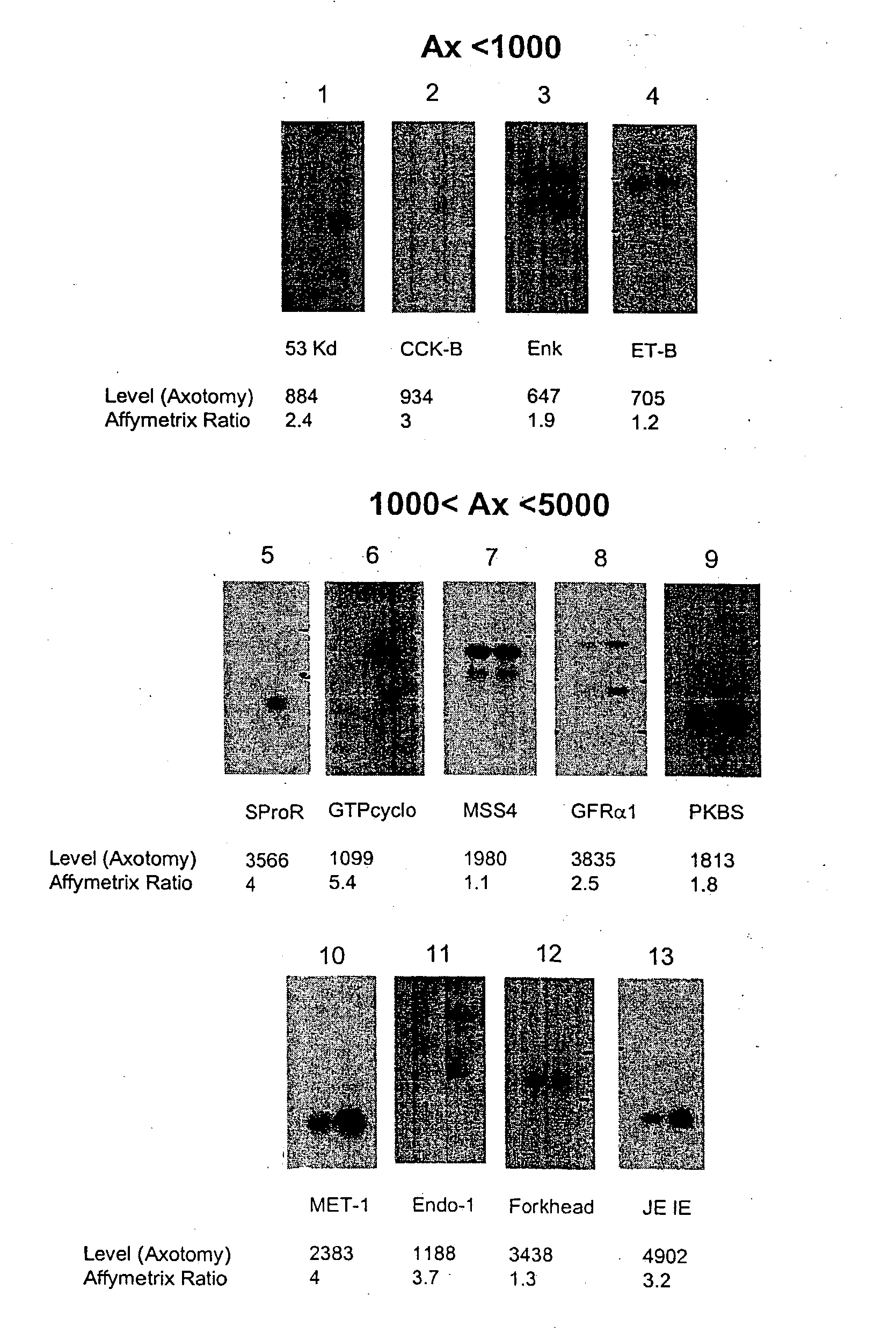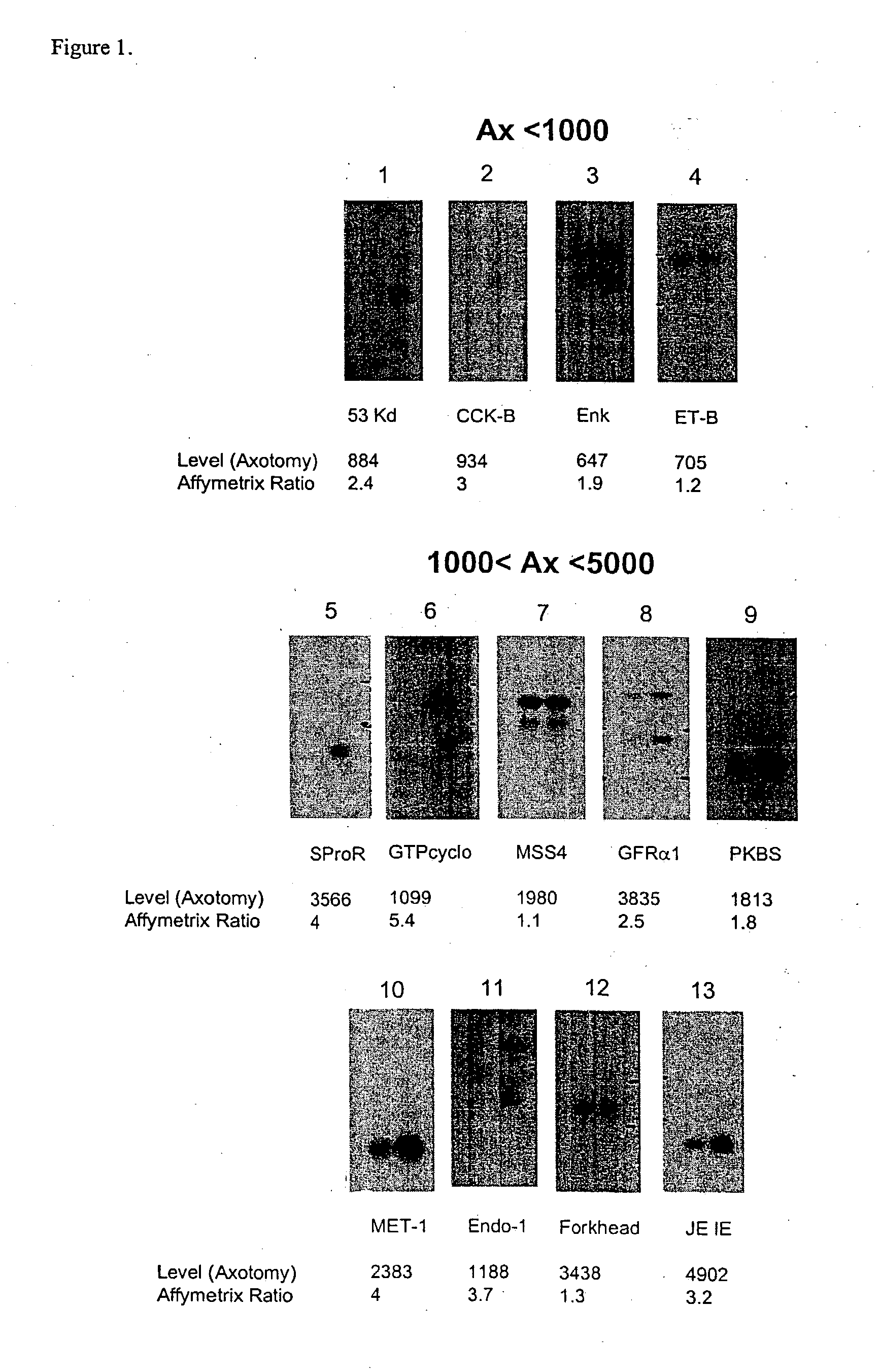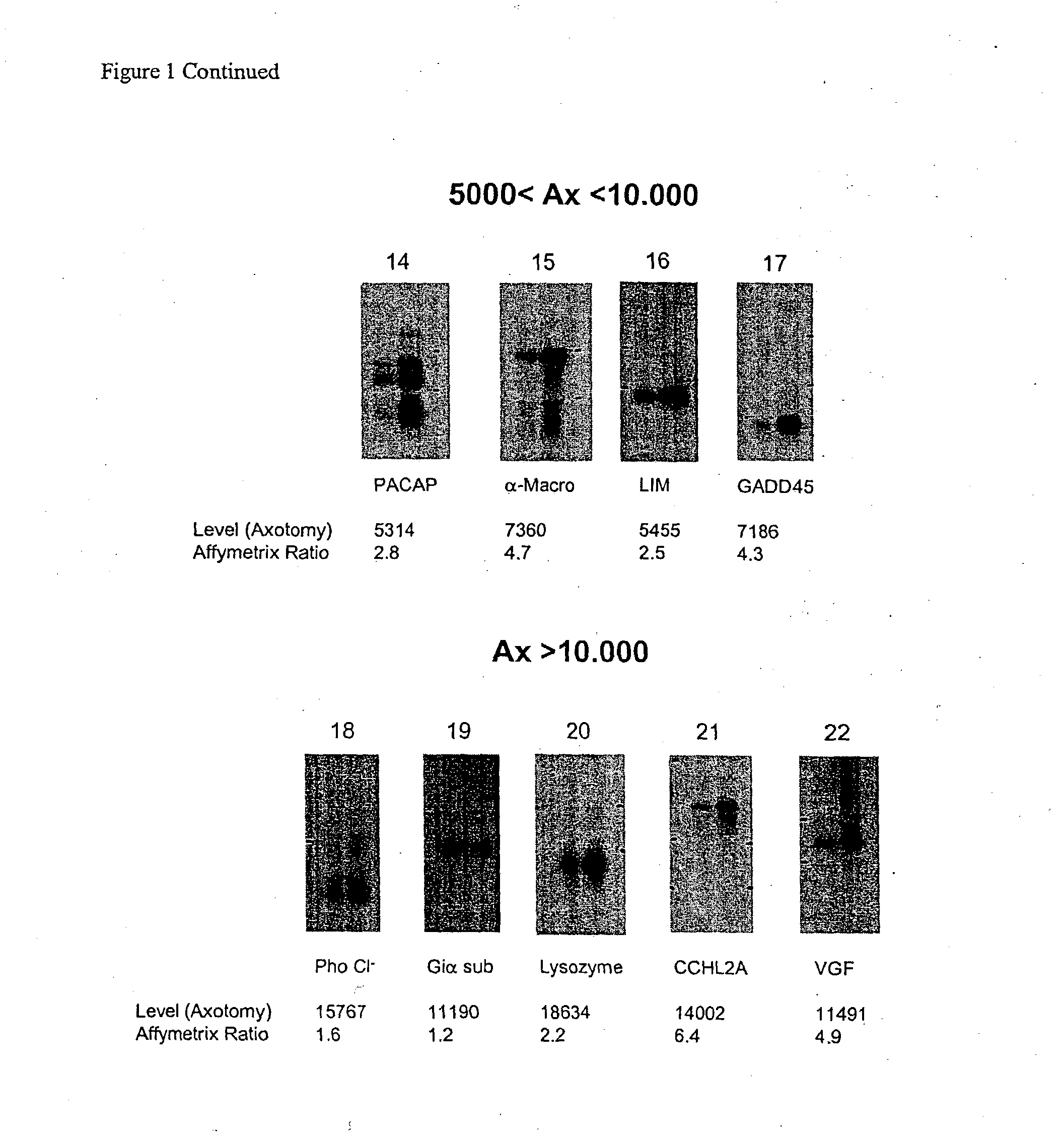Nucleic acid and amino acid sequences involved in pain
a technology of amino acid sequences and nucleic acids, applied in the field of nucleic acid and amino acid sequences involved in pain, can solve the problems of substantial side effects, relatively ineffective current therapy,
- Summary
- Abstract
- Description
- Claims
- Application Information
AI Technical Summary
Benefits of technology
Problems solved by technology
Method used
Image
Examples
example 1
Identification of Differentially Expressed Nucleic Acid Sequences
[0404] The present invention relates to a method for the identification of nucleic acid sequences and / or genes which are differentially expressed in an animal which has been subjected to pain. In one embodiment, the animal is a pain model, that is, the animal has been artificially manipulated such that it meets the criteria for a state of pain as described above. In one embodiment the animal pain model is produced by transection of the sciatic nerve (axotomy). In an alternate embodiment, the animal pain model is the spared nerve injury model (SNI; Decosterd and Woolf, 2000 Pain 87: 149) in which one of the terminal branches of the sciatic nerve is spared from axotomy. In a further alternate embodiment, the animal pain model is an inflammation model (Stein et al., (1988) Pharmacol Biochem Behav 31: 445-451; Woolf et al., (1994) Neurosci. 62, 327-331) in which an irritant such as CFA is injected into an animal to induce...
example 2
Verification by In Situ Hybridization
[0422] In addition to verification of differential expression using Northern analysis, the present invention provides that the differential expression of genes in an animal subjected to pain may be confirmed using in situ hybridization.
[0423] In situ hybridization is carried out on fresh frozen, 5 μm thick sections of the dorsal root ganglia from spinal levels L4-L5 obtained from animals subjected to pain, using isotopically-labeled probes. Forty-eight base pair oligonucleotide probes are designed to have 50% G-C content and be complementary to and selective for the desired mRNA. Probes are 3′-end labeled with 35S or 33P-dATP using a terminal transferase reaction and purified through a spin column. Hybridization is carried out such that homologies greater than 90% are required for detection of transcripts (Dagerlind et al., '92 Histochemistry 98:39). Generally, slides are brought to room-temperature and covered with a hybridization solution (50...
example 3
Verification of Differential Expression by Real-Time PCR
[0426] In addition to verification of differential expression by Northern analysis or in situ hybridization, the differential expression of genes in an animal subjected to pain may be verified using real-time PCR and TaqMan® probes. The technique of real-time PCR is well known in the art (see, for example, U.S. Pat. Nos. 5,691,146; 5,779,977; 5,866,336; and 5,914,230).
[0427] cDNA samples obtained from a rat axotomy pain model were amplified using primers specific for 19 genes which had previously been examined by microarray analysis and SYBR Green I as the double stranded DNA binding dye. PCR products were generated using an ABI 7700 sequence detection system (Applied Biosystems, Foster City, Calif.). A comparison of the expression level measured by microarray analysis and that obtained by real-time PCR is shown in Table 9. A close correlation can be seen between the differential expression, or lack thereof, of genes examined...
PUM
| Property | Measurement | Unit |
|---|---|---|
| pH | aaaaa | aaaaa |
| pH | aaaaa | aaaaa |
| pH | aaaaa | aaaaa |
Abstract
Description
Claims
Application Information
 Login to View More
Login to View More - R&D
- Intellectual Property
- Life Sciences
- Materials
- Tech Scout
- Unparalleled Data Quality
- Higher Quality Content
- 60% Fewer Hallucinations
Browse by: Latest US Patents, China's latest patents, Technical Efficacy Thesaurus, Application Domain, Technology Topic, Popular Technical Reports.
© 2025 PatSnap. All rights reserved.Legal|Privacy policy|Modern Slavery Act Transparency Statement|Sitemap|About US| Contact US: help@patsnap.com



